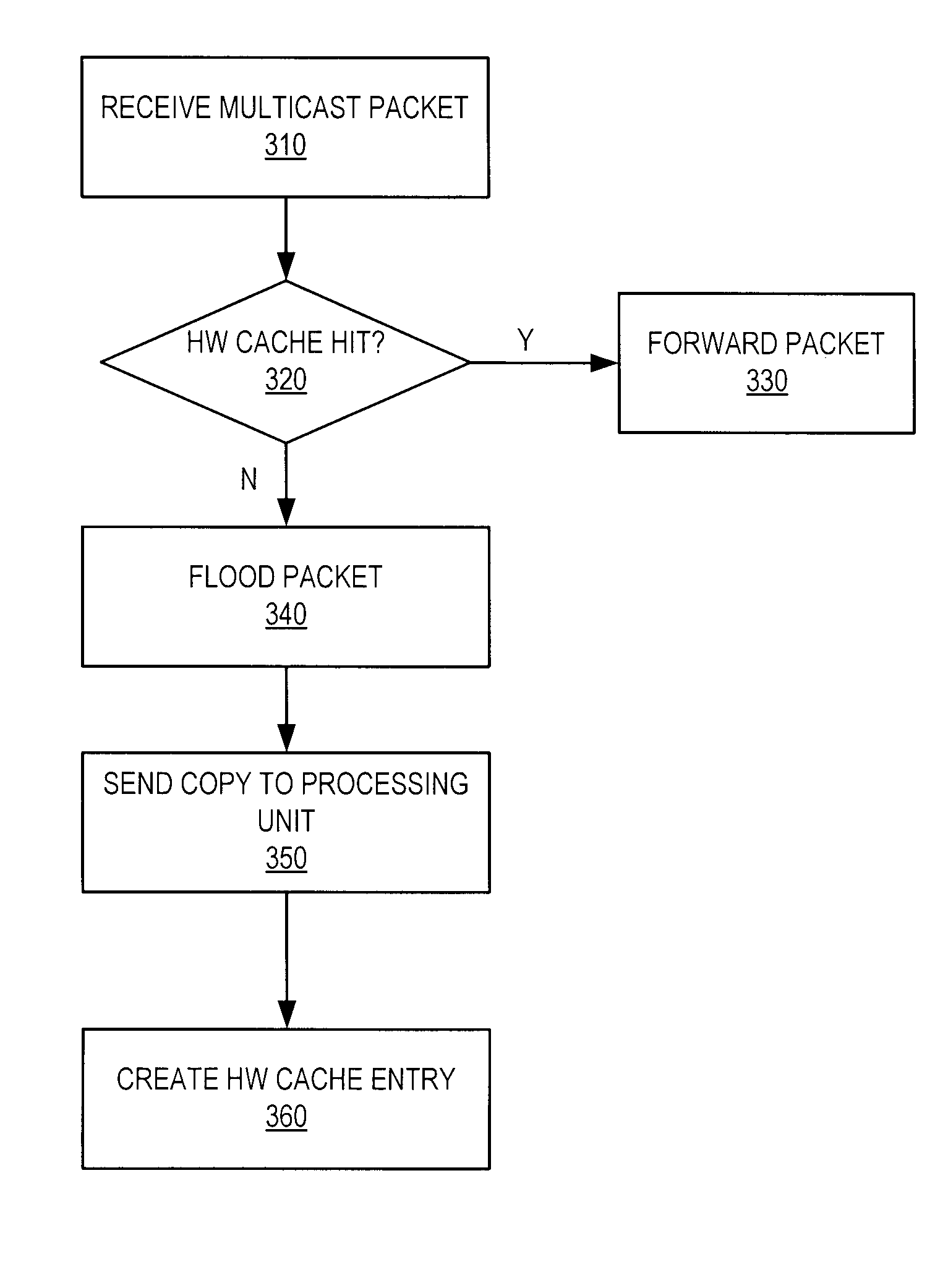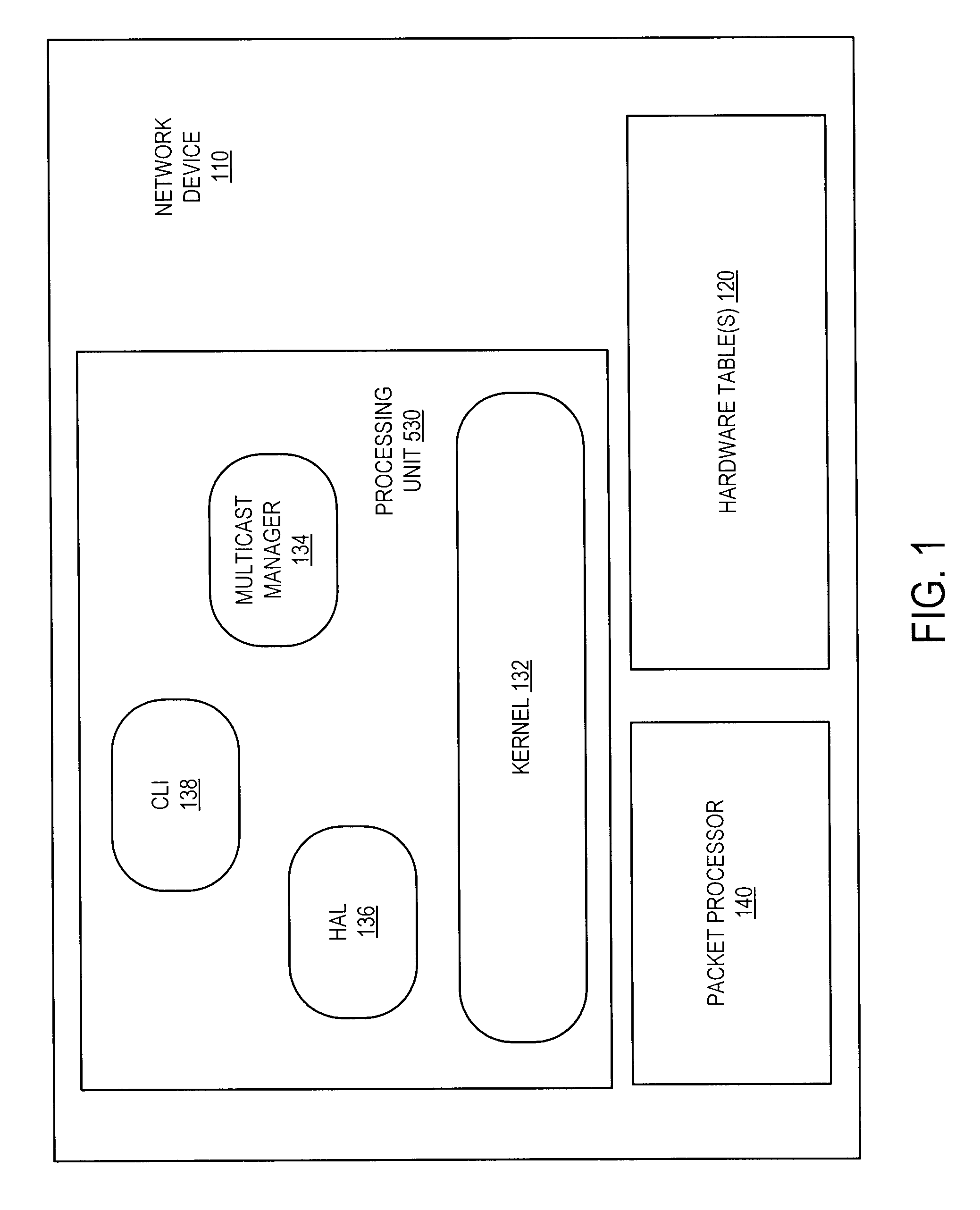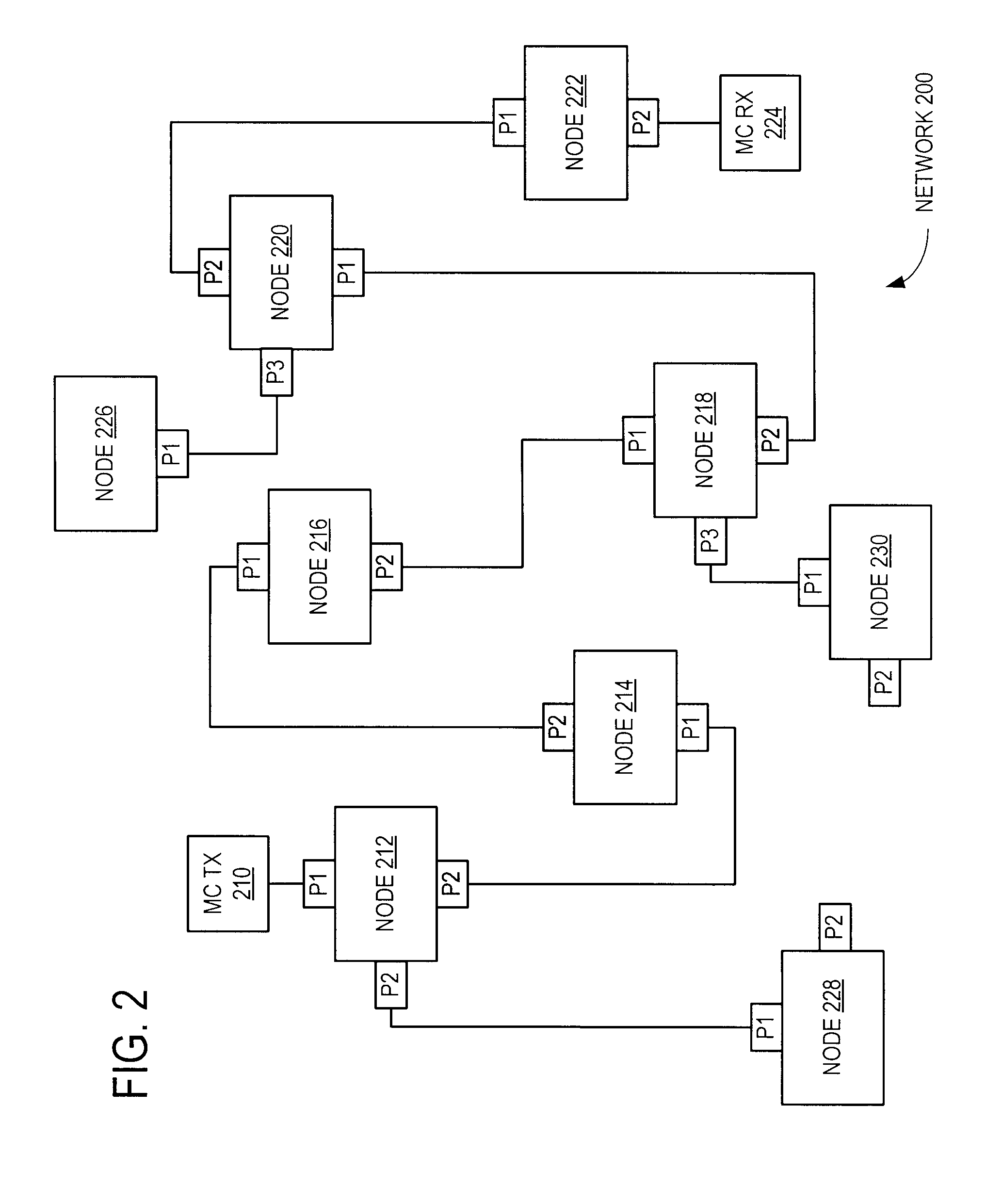Convergence of multicast traffic
a multicast traffic and convergence technology, applied in the field of computer networking, can solve the problems of thousands of data packets in the cpu queue, packets experiencing cache misses in hardware, and exacerbating multicast convergence problems even further, and achieve the effect of facilitating multicast traffic convergen
- Summary
- Abstract
- Description
- Claims
- Application Information
AI Technical Summary
Benefits of technology
Problems solved by technology
Method used
Image
Examples
Embodiment Construction
[0017]In the following description, numerous details are set forth. It will be apparent, however, to one skilled in the art, that the present invention may be practiced without these specific details. In some instances, well-known structures and devices are shown in block diagram form, rather than in detail, in order to avoid obscuring the present invention.
[0018]As provided herein, methods, apparatuses, and systems facilitate improved convergence of multicast traffic in a network after a topology change. When a network node receives a multicast data packet, the packet is processed. If the node detects a cache miss for the data packet, that packet is flooded via hardware onto ports of the network. Additionally, a copy of the packet (that caused the cache miss) is sent to an out-of-line processing unit. The copy of the packet is processed without forwarding the copy onto the network from the processing unit. Processing of the packet includes establishing a hardware cache entry for th...
PUM
 Login to View More
Login to View More Abstract
Description
Claims
Application Information
 Login to View More
Login to View More - R&D
- Intellectual Property
- Life Sciences
- Materials
- Tech Scout
- Unparalleled Data Quality
- Higher Quality Content
- 60% Fewer Hallucinations
Browse by: Latest US Patents, China's latest patents, Technical Efficacy Thesaurus, Application Domain, Technology Topic, Popular Technical Reports.
© 2025 PatSnap. All rights reserved.Legal|Privacy policy|Modern Slavery Act Transparency Statement|Sitemap|About US| Contact US: help@patsnap.com



